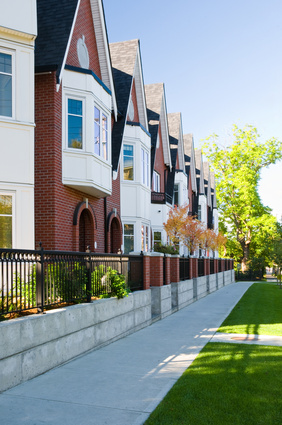Investing In Retirement Villages
The retirement living sector is booming thanks to Australia’s rapidly ageing population. So how can savvy property investors get a slice of the action?

Unless you have been living under a rock for the last ten years you would know that Australia’s population, like the rest of the developed world, is rapidly ageing. The maturing of the country’s demographic profile is changing the nature of our living arrangements and driving a boom in the retirement living sector.
Retirement Villages Overview
Retirement villages provide accommodation for older, retired people. The majority of accommodation options in Australia have previously been targeted to the elderly, low and middle socio-economic demographic, with village-style accommodation and additional services such as meals, cleaning, or nursing.
Retirement living options are typically either an Independent Living Unit (ILU) or a Serviced Apartment. ILU’s consist of detached or townhouse-style villas or large two and three bedroom apartments. These types of properties are popular with mobile, independent retirees and are designed for fully independent living. They can range from basic through to luxury living.
ILU’s are not dissimilar to standard residential housing, although purpose-built residences feature special retirement living fittings such as enhanced security, emergency call buttons for medical assistance, wider doorways, larger shower cubicles and lift rails in the bathrooms.
Serviced Apartments are smaller than ILU’s but offer an enhanced level of care to individuals who can no longer cope with some daily tasks on their own, such as housework, shopping, the preparation of meals and in some cases personal care.

Modern retirement living communities may offer a mix of accommodation styles and care options, which allows the village owner to manage residents within the complex as their needs increase. For example, a resident may initially move into an independent living villa or townhouse within the community. As their independence and mobility decreases, they have the option to move into a smaller, more easily maintained apartment also within the community.
It is estimated that around half of the retirement communities in Australia are now owned by corporations such as investment banks and large property companies, with the remainder owned by the private or “not-for-profit” sector, including church groups and benevolent associations.
Rental Retirement Villages
Rental retirement villages are the only way for investors to acquire direct exposure to the retirement sector. In rental retirement villages the units are sold to investors specifically for the purpose of renting to elderly tenants.
Rental retirement villages operate under standard residential tenancy agreements and a specialist, retirement village management company is appointed by the body corporate or owners corporation to operate the village on behalf of investors. The actual on-site manager is an employee of the management company and responsible for the day-to-day operation, leasing and maintenance of the complex.

The management company charges letting and management fees, however investors may be free to appoint external real estate agencies for these tasks if they choose. Management companies will typically offer additional services to village residents such as cleaning and meals, and these are contracted directly with the tenant.
It is fair to say that the rental model for retirement villages is still evolving in Australia. In the US for example, most retirement villages operate under a rental model, charging a monthly fee that varies depending upon the amount of add-on services used.
In Australia, the rental model is aimed at the lower socio-economic demographic and the weekly rent charged has to be cognisant of the aged pension and rental assistance allowances received by retirees. This may prevent landlords from charging rent that is equivalent to the market rate for a similar type of property outside of the complex.
Rental retirement complexes are typically found in fringe and suburban locations and are popular with retirees who possess a limited capital and income base. The rental units are usually one-bedroom apartments, often not much bigger than 40 square metres in size. They may be furnished or un-furnished and would typically not include garaged car parking. The complexes may offer a central dining facility with meal service and as such, the units have only rudimentary kitchenettes.
Financial planners and property spruikers sold many of these village units to “Mums and Dads” investors at inflated prices around fifteen years ago. As a rule, they don’t perform well as investments due to the inability of rents to match the market and there is concern around the viability of the business model for managers of the complex. Other owners include developers who have retained stock and some institutional investors.
Investment Facts
One of the benefits of buying an investment property in a rental retirement village is the low cost of acquisition. It is still possible to buy units for under $100,000, although an average price would be around $140,000-$160,000. Investors should be aware that banks are hesitant to lend against these types of assets.
 Investment returns consist of a rental income yield and capital gain upon sale. A gross yield of between 2-9% is diluted by the usual property-related expenses such as rates, letting and management fees, and property maintenance.
Investment returns consist of a rental income yield and capital gain upon sale. A gross yield of between 2-9% is diluted by the usual property-related expenses such as rates, letting and management fees, and property maintenance.
Capital gains are constrained by the lack of opportunity for an investor to increase rent, as a tenant’s ability to pay is directly related to the value of the age pension and rent assistance allowance. Consequently, the total value of individual units in the better-located villages may be less than the actual value of the land the village occupies!
Unlike normal residential investment property, the performance of a rental village unit will be largely dependent upon the ability of the village manager to drive occupancy and rental growth. This adds a layer of “management risk” which should ideally be rewarded with a higher yield or capital growth profile than that of standard residential property.
With such a low purchase price, the reluctance of banks to lend against the asset as well as constrained yield and capital growth prospects, the logical owners for these properties are low-end owner-occupiers. A suggested opportunity for investors would therefore be to buy, renovate and flip to an owner-occupier.
Sourcing Properties
Finding units for sale will take investors a little more work. Sometimes units are advertised in the classified section of the local seniors’ newspaper, however your best option is to approach the on-site manager of a rental complex and ask if there are any units for sale. Most managers would be happy to put you in touch with existing investors who are looking to sell.
The Re-sale Market
An efficient secondary market for these assets does not yet exist. Real estate agents are loath to list them as the low selling price equates to an equally low commission. Selling a property for $120,000 takes the same time and effort as a property worth three times that amount, so why would they bother? Similarly to finding an investment unit, your best sale option is to work with the on-site manager to sell your unit.
Pro’s
- Growing demand for retirement accommodation
- Few options exist for retirees to rent accommodation
- Lack of new supply
- Lack of low-cost retirement accommodation
Con’s
- Hard to find
- Inefficient secondary re-sale market
- Village manager risk
- Sub-market rents
- Constrained capital growth prospects
Rental units located in retirement villages are currently the only viable option for the average investor to access direct property exposure to the retirement sector. They pose significantly higher risk than standard residential property and accordingly buyers should do careful research before investing.
Richard Andrews is the founder and director of Find My Retirement Home and author of the newly-released book “Don’t buy your Retirement Home without ME!”. For more information please visit www.findmyretirementhome.com.au





Got something to say? Post a comment...
You must be logged in to post a comment.